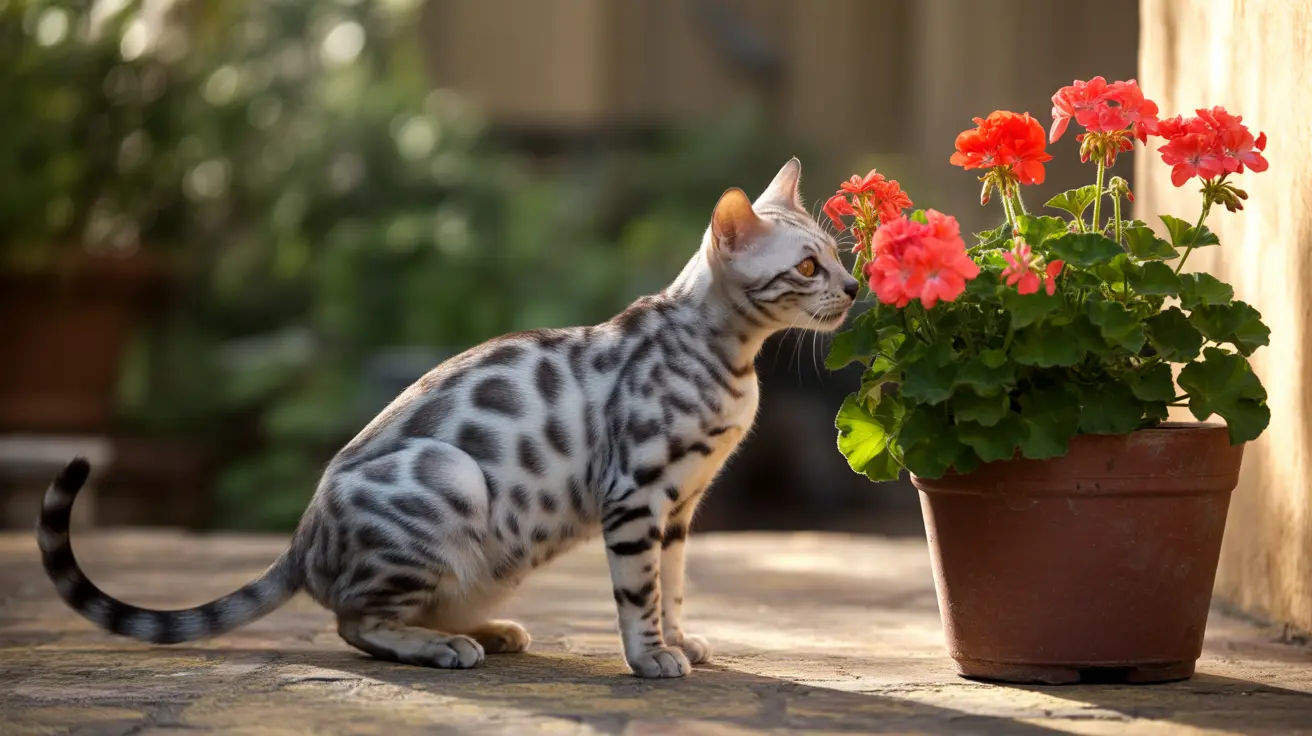Understanding Geranium Toxicity in Cats
Geraniums, specifically the Pelargonium species, contain toxic compounds called geraniol and linalool. These essential oils are present throughout the entire plant, including the leaves, stems, and flowers. While these compounds give geraniums their characteristic scent and help repel insects, they can be harmful to cats when ingested or even through skin contact.
Different Types of Geraniums and Their Risks
Not all geraniums pose the same level of risk to cats. Scented or annual geraniums (Pelargonium species) are the most concerning, while true hardy geraniums (also known as cranesbills) are generally considered safe. This distinction is important when choosing plants for your home or garden.
Signs of Geranium Poisoning in Cats
If your cat has been exposed to toxic geraniums, watch for these common symptoms:
- Vomiting and diarrhea
- Loss of appetite
- Lethargy or depression
- Drooling and oral irritation
- Skin redness and irritation
- In severe cases, muscle weakness or coordination problems
Treatment and Emergency Response
If you suspect your cat has ingested geraniums, take these immediate steps:
- Remove any plant material from your cat's mouth
- Contact your veterinarian or pet poison hotline
- Monitor your cat closely for symptoms
- Collect a sample of the plant for identification
Most cases of geranium poisoning are mild and resolve within a few days with proper supportive care. However, veterinary treatment may be necessary, especially if your cat shows severe symptoms or has ingested a large amount of plant material.
Prevention and Safe Alternatives
The best way to protect your cat is through prevention. Consider these safety measures:
- Keep geraniums out of reach or remove them entirely
- Choose pet-safe alternatives like true hardy geraniums
- Create designated pet-safe garden areas
- Monitor your cat's behavior around plants
- Keep emergency contact numbers readily available
Frequently Asked Questions
Are geraniums toxic to cats, and which types pose the most risk?
Yes, geraniums of the Pelargonium species are toxic to cats. These scented or annual geraniums pose the highest risk, while true hardy geraniums (cranesbills) are generally safe. The toxic compounds geraniol and linalool are present in all parts of the Pelargonium plant.
What are the common symptoms if my cat eats or chews on a geranium plant?
Common symptoms include vomiting, diarrhea, loss of appetite, lethargy, drooling, and oral irritation. In more severe cases, cats may experience muscle weakness and coordination problems.
How should I treat or respond if my cat shows signs of geranium poisoning?
Remove any plant material from your cat's mouth, contact your veterinarian immediately, and monitor your cat closely. Bring a sample of the plant for identification if possible. Most cases require supportive care and resolve within a few days.
Can cats get skin irritation just by touching geranium plants, or is ingestion necessary?
Yes, cats can develop skin irritation (dermatitis) from direct contact with geranium plants, even without ingestion. The essential oils in the plant can cause redness, itching, and swelling on contact.
What are safe plant alternatives to geraniums for homes with cats?
Safe alternatives include true hardy geraniums (cranesbills), spider plants, Boston ferns, African violets, and Swedish ivy. Always verify plant safety through reliable sources like the ASPCA's toxic plant database before introducing new plants to your home.
Conclusion
While geraniums can pose a risk to cats, understanding these risks and taking appropriate precautions can help keep your pet safe. If you choose to keep geraniums, ensure they're placed in areas your cat cannot access. When in doubt, opt for pet-safe alternatives and always keep emergency veterinary contact information readily available.






